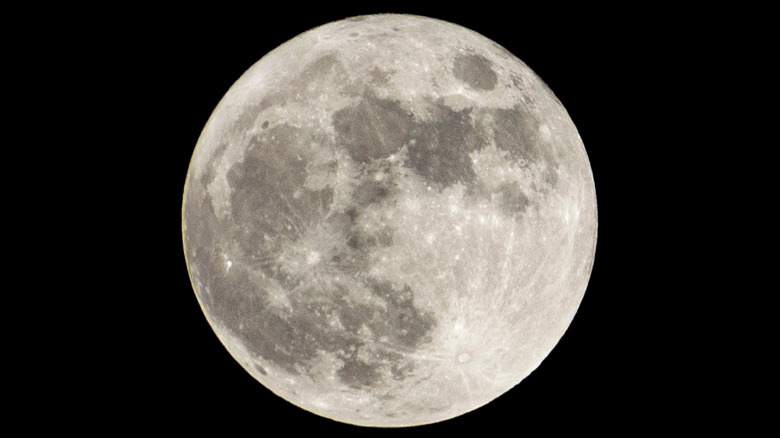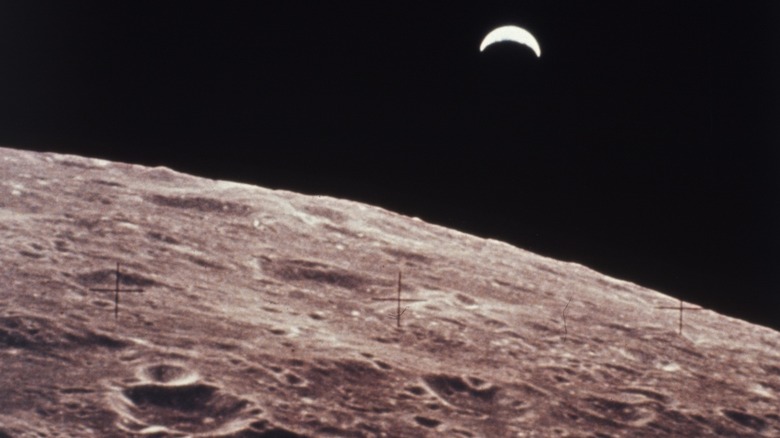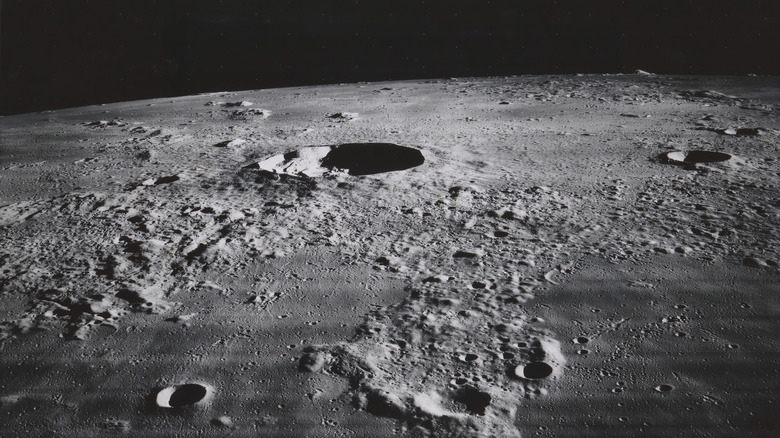What Are The Marks On The Moon That Make It Look Like Swiss Cheese?
Legends from hundreds of years ago tell tall tales of a moon made of cheese. In The Middle Ages, the myth of the moon being made out of cheese came from a story people told about a fox escaping the wolf. The fox outwits his pursuer by diverting his attention to the moon's reflection in a pool of water, which the ravenous wolf mistakes as cheese (per Mental Floss). Other mentions of a moon made of cheese date back to 1646, per "The Proverbs of John Heywood," which referred to the cheese being green, an adjective that Mental Floss says refers to moldy or aged cheese.
It's no big wonder people have been making comparisons of the moon to cheese. Dark spots and other features you can see on the moon without a telescope give it a three-dimensional, porous look that resembles a tasty Swiss. But recently a new study funded by NASA uncovered new information about what's going on beneath the moon's dark spots.
The surface of the moon
According to the Natural History Museum, the moon's dark spots are known as the Latin word "maria," which translates to refer to the sea. That's because early astronomers originally thought the moon might have once held bodies of water, but actually, these dark spots are volcanic plains, per The Washington Post.
Within these dark spots, a 2009 spacecraft discovered even deeper black pits created by collapsed lava tubes, according to Universe Today. Also found under the Earth's surface, lava tubes are formed when "molten lava flows beneath a field of cooled lava or a crust forms over a river of lava, leaving a long, hollow tunnel," per SciTechDaily. When the roof of these lava tubes collapses due to changes in pressure, it creates a cave-like entrance on the moon's surface (via SciTechDaily). A group of researchers from the University of California, Los Angeles recently set out to explore how hospitable these caves were on the moon.
Deeper exploration
Turns out, these caves — protected from the ultraviolet radiation of the sun, meteorites, and cosmic rays — remain relatively stable at about 63°F, according to their work published in the journal Geophysical Research Letters. In comparison, we know what the surface of the moon is really like in unsheltered portions, with temperatures ranging between 260°F and minus 280°F, according to SciTechDaily. "Although we cannot be completely certain of a cave's existence through remote observations, such features would open the door for future exploration and habitation on the moon," the authors wrote. "[T]hey could provide shelter from dramatic temperature variations present elsewhere on the lunar surface."
After all, humans started out here on Earth in caves, said one of the study's co-authors, David Paige, in an interview with SciTechDaily. "Humans evolved living in caves, and to caves we might return when we live on the moon," he said.


